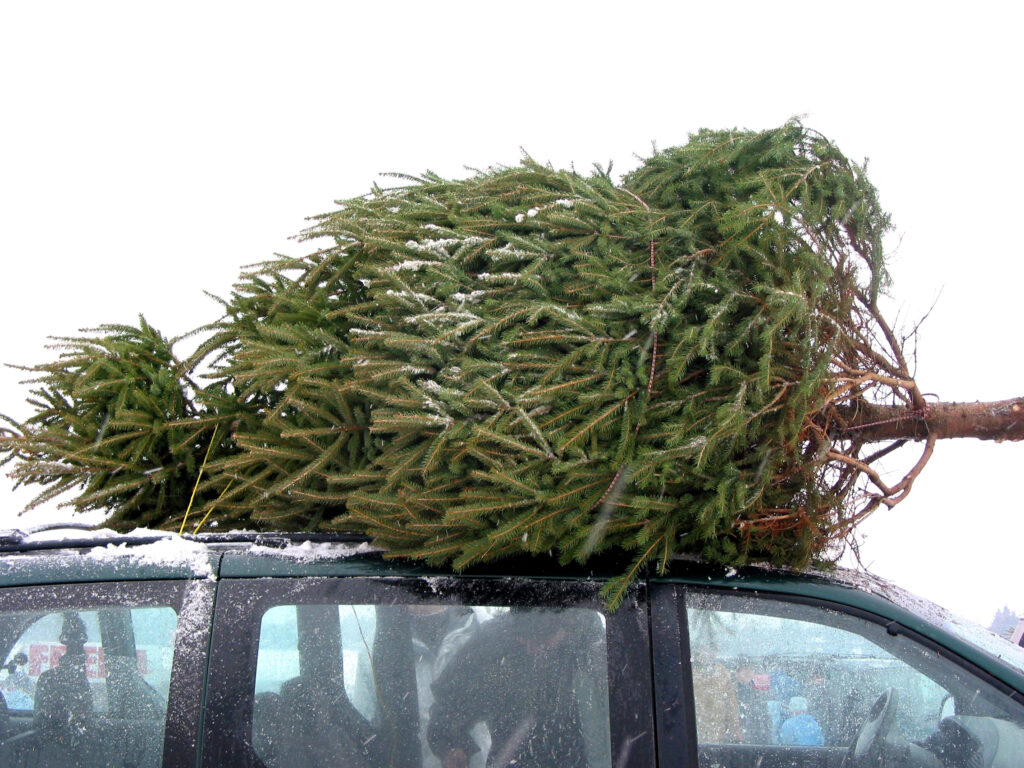Paper or plastic? Real or fake? Every holiday season, a debate is sparked over whether a real or artificial Christmas tree is the better choice to celebrate the holiday season. While there are pros and cons to both, there is an even better option – a living Christmas tree.
A living Christmas tree provides an eco-friendly and hands-on way for your family to celebrate the holiday. These are live trees with their roots still attached. They are typically sold either in containers or with their roots balled and burlapped, which means that the root ball of the dug-up tree has been bundled up in burlap or another fabric so it can be replanted later.
More people are getting excited about being able to plant their Christmas tree after the holiday to prolong the enjoyment and sentiment of the season, while also connecting to nature. Even if you are overwhelmed with the thought of planting a tree in your backyard, you can opt for a dwarf living Christmas tree that can stay in a container for several years and be brought inside just at Christmas time.
Why Living Christmas Trees Are the Best Option
Approximately 25-30 million real Christmas trees are sold in the U.S. every year, according to the National Christmas Tree Association. While real trees are more sustainable than artificial ones, they still are only used once and then either disposed of or recycled into other materials like mulch.
And then there are the artificial trees, which are made from nonbiodegradable plastics and possibly metal toxins such as lead. About 80% of artificial trees worldwide are manufactured in China, which means long-distance shipping that results in negative impacts on the environment like air pollution.
But living Christmas trees are beneficial both during and after the holiday season. They create long-lasting memories because your family can enjoy them for years to come. Once replanted, they remove carbon to address climate change and provide shade and habitat for wildlife. They also minimize waste and reduce deforestation associated with traditional Christmas trees.
How to Choose Your Family’s Living Christmas Tree
You can find a living Christmas tree at nurseries, garden centers, home improvement stores, online retailers and specialized tree farms. In order to pick the right tree for your family, consider how much space you have both inside your home and in your yard to plant the tree afterwards, the health of the tree, the type of species you prefer aesthetically and that will flourish in your climate and the best time to bring one home.
For apartments, townhouses and other small spaces, a potted dwarf tree is a good option. If you intend to plant your living Christmas tree, choose a tree that will fit comfortably in your yard once it matures. Some species like pines and firs can grow two feet or more per year. If you don’t have room in your yard, you could enjoy the tree for a year or two in its container and then give it away to a local school, religious o rganization or community center where it will have more room to grow.
When you are examining the trees to decide which one to bring home, look for one with healthy branches; full, firm needles that can’t easily be plucked; needles that don’t have yellow or brown tips; and well-developed root balls.
Next, check the plant tag for the USDA hardiness zone. Select a tree that can survive in a region at least as cold as your growing zone. Don’t hesitate to ask the vendor for guidance about the local climate and soil conditions in your area.
Finally, keep in mind that the best time to buy a living Christmas tree is a couple of weeks before you plan to move it indoors. The tree can only stay inside your house for up to two weeks, because the indoor heat and lack of humidity can cause it to go into shock, which could kill it.
How to Care for a Living Christmas Tree
Some people shy away from a living Christmas tree because of the care required to keep it alive during and after the holiday season. However, the process of picking out the tree, caring for it and enjoying it outside in your yard is a wonderful opportunity to get the kids involved so they can learn all about trees and nature.
Once you bring your tree home, you’ll need to gradually acclimate it for the indoors by keeping it in a sheltered and shaded area outside for a few days. Then move it into a cool area of your home, like a garage or enclosed porch, for one to two days. When it’s time to set it up inside, make sure the tree is in a cool spot away from heat or direct sunlight. Water the tree every two to three days, but do not flood it.
After two weeks, it’s time to take the tree outdoors. Reverse the process so your tree adjusts to being back outside. Move it into the transitional area of your home for 48 hours. Then move it to a sheltered outdoor area for a few days to gradually introduce it to more sun and wind. Plant it in the perfect spot in your yard and enjoy it for many seasons – and possibly generations – to come.
Sandi Schwartz is an award-winning author and journalist, and mother of two. She has 25 years of experience writing about parenting, wellness, and environmental issues. Her books Finding Ecohappiness and Sky’s Search for Ecohappiness inspire families to build a nature habit to feel happier and calmer. Learn more at ecohappinessproject.com.


